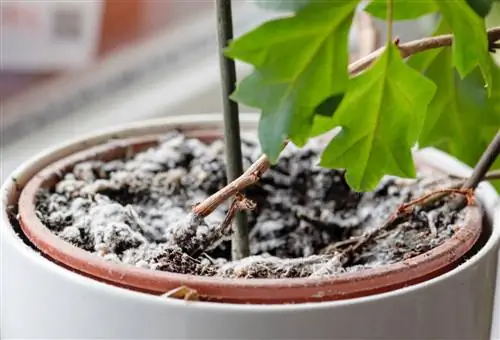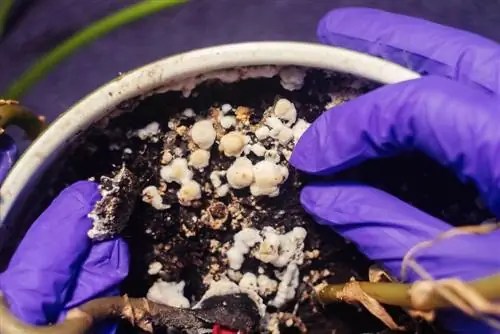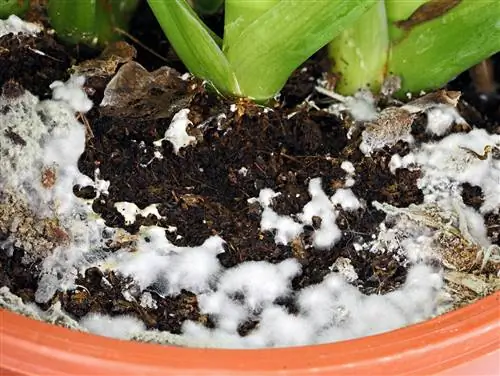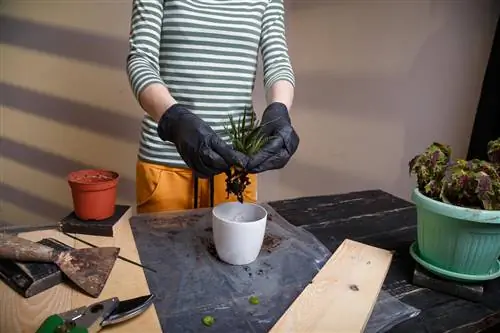- Author admin [email protected].
- Public 2023-12-16 16:46.
- Last modified 2025-01-23 11:22.
If you discover a white layer in the flower pot, you should quickly check whether this is dangerous mold. In this article you will learn how dangerous mold in potting soil really is, how to recognize it and how to act correctly.

Is mold on potting soil dangerous for people?
White mold on potting soil islittle dangerous for he althy peopleHowever, people with a weakened immune system or those who suffer from allergies may experience breathing difficulties, asthma attacks or even shortness of breath. Therefore, you should definitely remove the mold as quickly as possible.
Is mold on potting soil dangerous for plants?
Mold in the potting soil can hardly harm adult and he althy houseplants. However, mold often appears in growing trays. There the fungus can damage the smallseedlings and young plants They compete with each other for nutrients. As a result, the small plants can be stunted in their growth or even die completely.
How do I recognize dangerous mold in the potting soil?
You can recognize mold bywhitish, fluffy, soft spots on the surface of the earth. In some cases a coherent network forms. The potting soil can also smell musty. To rule out that the white spots are limescale deposits, you should do the swab test. Take a wooden stick and scratch into the white spots. In contrast to mold, limescale deposits are crumbly and hard.
How do I combat dangerous mold in the potting soil?
How to combat mildew infestation:
- Remove the affected layer of soil. Do not dispose of them in the compost, but in the household waste.
- Now spread sand over the surface. This absorbs moisture particularly well.
If there is a particularly strong mold infestation:
- Repot the affected plant. The fungus is also deep in the soil. Therefore, you need to replace all the potting soil.
- It is best to clean the pot inside and out with a vinegar solution before using it again.
How do I prevent dangerous mold on the potting soil?
You can effectively prevent mold with the following measures:
- Ensure a good indoor climate through regular ventilation.
- Use high quality potting soil.
- By watering appropriately, you can avoid excess water so that the pot ball is not permanently moist.
- If your plant allows it, you can let the soil dry regularly.
- Mix expanded clay or clay granules into the potting soil. These absorb excess water and release it to the plant when needed.
- Use a coaster to avoid waterlogging.
Tip
Be safe when removing dangerous mold from your potting soil
When treating infected plants, you should definitely work in fresh air and, as a potentially endangered person, also wear a respiratory mask and disposable gloves. Otherwise, the mold spores can lodge in your lungs and cause major damage.






